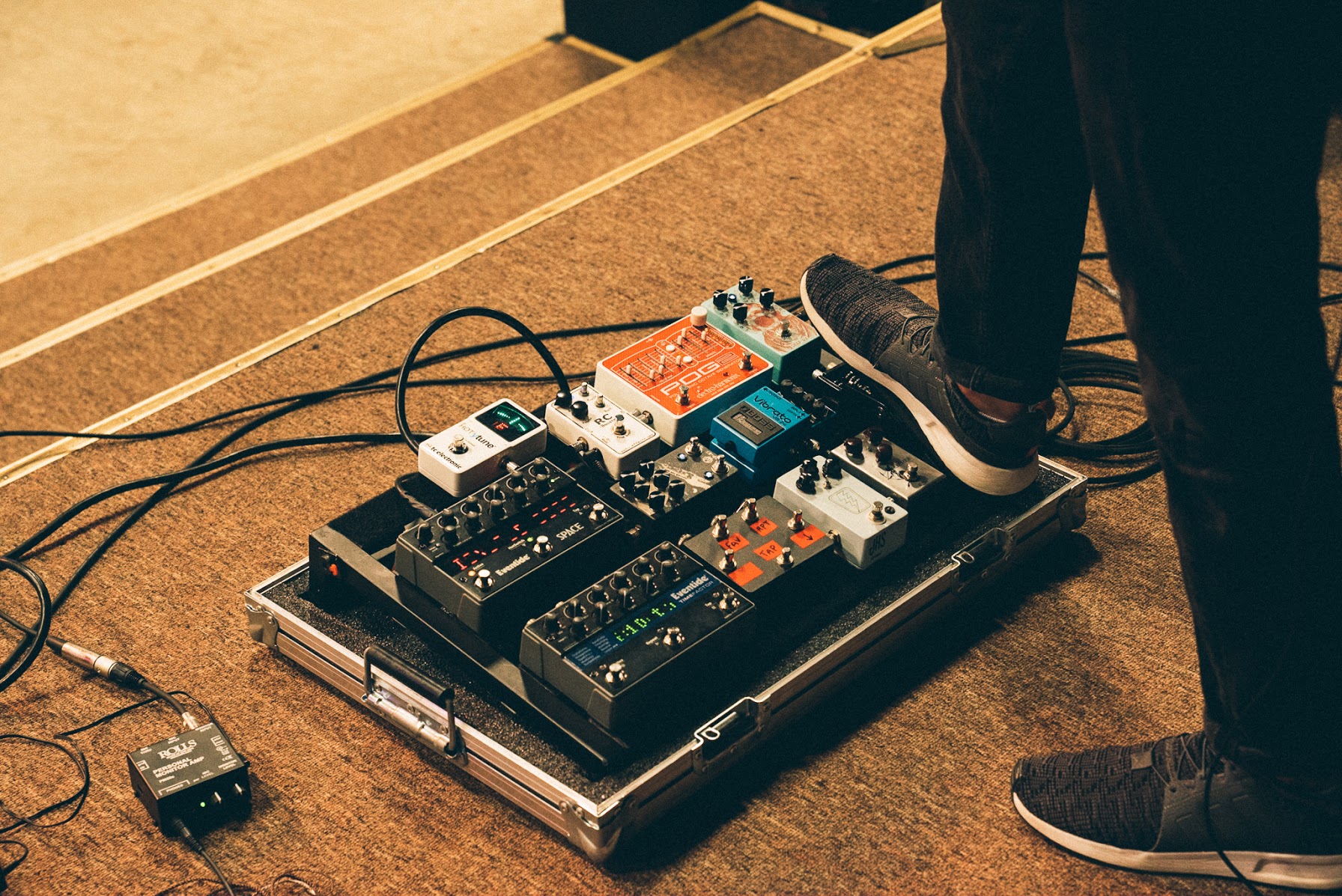A key contribution that electric guitar players can make to the overall feel and atmosphere of a worship set is creating a wall of sound that sits underneath the rest of the band and fills the empty spaces left by other instruments. We can call this padding, for short! When first getting started with effects and pedals that allow you to start padding, it can be very tempting to crank up all of the mix knobs to create massive soundscapes, hold a big 1 chord that sustains forever, and call it done. In our desire to shepherd our congregations and pursue excellence together, there are a few things to keep in mind that, if applied, will allow us to pad in context with the direction of the set in a way that’s not distracting!
Use delay as your foundation, then add reverb and modulation for extra flavor.
If there is one effect that is a must for creating a solid guitar pad setting, it’s delay. Use high mix ratios and medium to long feedback settings to provide plentiful sustain for your swells, and maybe throw in a touch of modulation on the delay setting itself, but don’t go crazy. Some hall or plate style reverb at a low mix level but with medium to long decay time can add some extra depth. In addition, modulation effects like chorus, vibrato, tremolo, and octave shifting can all add unique character to your sound. Use these effects sparingly; when all of these things are combined at high mix levels, they can really fight with each other and it can be hard to even remember what your original tone sounds like!
Tip: Delay pedals with “favorite” switch options make it easy to toggle a swell setting on the fly in a live setting!
Be “selective” with your pickups
Depending on where you are in the set, different pickups will be more appropriate. For example, during a speaking moment, the bite from a bridge pickup might not sit very well in a mix with whatever is being spoken, which needs to be the highlight of the moment! Your neck and middle positions are going to be your best options here. In contrast, songs that have first verses without a lot of drums but still require energy (Lion and the Lamb, Follow You Anywhere, Worthy of Your Name) would benefit from swells that have that extra bite from the bridge pickup to cut through the mix. This is also applicable for big endings with lots of cymbal swells.
Get into a rhythm with your keys player
During speaking moments, playing the same notes and chords as your keys player in a different octave will get the job done, but much more can be done! Be in communication with them and your worship leader regarding any progression that can be played to create movement and dynamics in the moments leading up to the next song in the set, and let keys take the lead here. We don’t want to just copy the chords that are being played; we want to add notes and chords that fill in the spaces that the keys are leaving.
Example: If the keys player is moving between a 1 chord and a 4 chord while working around a 5/1 shape in their right hand, find a way to swell in a way that highlights the 3rd of the chords being played.
Play in context with speaking moments
We need to be engaged with every word that is being spoken during our services, and one way that we can show this as guitar players is to adapt our padding to reflect the mood of the words being communicated. If a call to worship is being given on the hope we have in the resurrection of Christ, our playing should reflect that, so a progression with frequent minor chords may not fit with that content. Always be attentive to what is being said and adapt your padding accordingly!
As you approach padding from here on out, think about these principles and be in constant communication with your band regarding how your pads are contributing to the overall goal of the worship set. Our aim should never be to show off the tone and sound design of our pads, but should always be to help provide a comfortable base for truths to be communicated about Jesus Christ, our savior!

